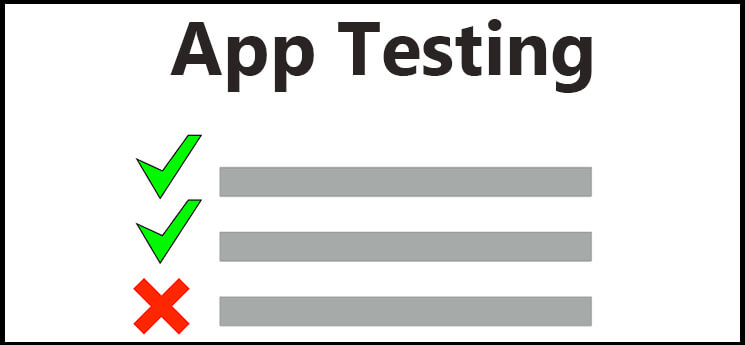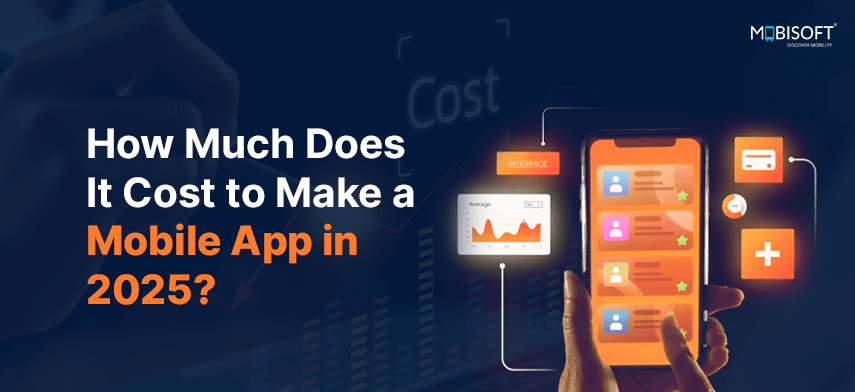The mobile app industry is growing at an exponential rate. It is expected to generate a revenue of $756 billion by 2027.
With smartphone users crossing 6.3 billion across the globe, businesses are actively investing in mobile application development to enhance customer engagement and drive revenue growth.
However, one of the crucial questions for businesses and startups planning to invest in mobile solutions is-
How much does it cost to develop a mobile app?
The answer is not straightforward. There’s no one-estimate-fits all. The app development cost varies based on the business model, the complexity of the app, platform choice, design, and the development approach.
In this guide, we’ll break down the costs of mobile app development. But first, let’s look at the key factors that influence pricing.
Key Factors that Determine the Cost to Develop a Mobile Application
1. Business Model
Your primary aim is to generate revenue from the app, directly or indirectly. Therefore, your business model defines how you want to build an app. Do you plan to include in-app purchases? Will it be a subscription-based model? Or an e-commerce platform?
Your business model will influence the development timeline, underlying technology stack, and the estimated cost.
2. The Complexity of the App
The complexity of the app is one of the biggest factors that affects the app development cost.
- Simple apps with no backend requirements and basic features can cost up to $20,000 to $50,000.
- Medium complexity apps with database integration, API connectivity, in-app purchases, may cost around $50,000 to $150,000.
- Complex apps with AI-integration, real-time updates, blockchain integration, high-level security, and custom features can cost between $150,000 – $300,000+.
Enterprise-level apps often require database integration, real-time updates, user security, and relevant customizations. The level of complexity in the features and functionality contributes to the budget.
3. The Choice of Platform

Your choice of platform to develop the app significantly affects the cost of development. Whether you are planning to launch an android app, iOS app, or both decides the development approach. The development and testing environment for different platforms varies, changing the cost accordingly.
As per the Statista reports, AppStore generated 24.6 billion U.S. dollars in revenues globally in the second quarter of 2024. But, android has occupied 71.5% of the global mobile operating system market share. Therefore, most businesses are launching apps on both platforms to reach a wider audience.
- Separately developing a native app for android and iOS will attract more cost. The cost to develop an android app is largely similar to the cost of developing an iOS app.
- Frameworks like React Native and Flutter allow you to develop cross-platform apps that can save you up to 30%-40% of the development cost. You’ll be able to build both an Android and iOS app with a single codebase at a cheaper cost.
4. Design and User Experience
The UI/UX design isn’t just about the app aesthetics. It’s about the intuitiveness of the app and the experience it provides to your user. A good design can convert a one-time user into a loyal one.
Therefore, investing in the right design is crucial for the success of your app.
- If you go with readymade templates or simple designs, your design cost may range between $5000 to $10,000.
- The cost for a more customized design catering to your business needs can go up to $50,000 or more.
- Designers often charge based on hour or the screen. The hourly rates typically range between $20 to $100 based on their experience level. The per-screen cost can add up to $160 to $800 depending on the complexity.
5. App Testing

Testing is an important part of the mobile app development process. This step ensures the usability, functionality, performance, security, and seamless integrations of the app.
Testing accounts for about 15-20% of the total cost of the app development.
6. The Location of the Development Team
The development cost for the mobile application varies depending on the region. Developers from the USA or Western Europe could be costlier than that of Eastern Europe, Southeast Asia, or India.
General estimates are:
| Region | Hourly Rate in USD |
| United States | $120 - $150 |
| United Kingdom | $100 - $120 |
| India | $20 - $50 |
7. Security and Compliance Consideration
Concerns over data privacy are rising, increasing the need for data encryption and secure authentication. Furthermore, the compliance with GDPR, HIPAA, and PCI-DSS regulations is crucial. These factors also contribute to the overall budget.

Additional Cost Considerations
Apart from the development cost, you might want to consider additional costs for the following factors to determine the total budget.
Feature-Specific Costs: Real-time chat, Push notifications, GPS integration, and payment integrations.
App Maintenance: The annual cost to maintain an app could be about 15-20% of the development cost.
Third-Party Integrations: APIs, analytics tools, social media integrations, and security features may require additional investment.
App Store Fees: Apple charges $99/year and Google Play has a $25 one-time fee.
Step-by-Step Mobile Development Process
Mobile development primarily has six stages. Below are the estimated timelines for the each stage, which may vary based on various factors:
- Research, validation, and feasibility test: 2 weeks
- UI/UX design: 2 to 4 weeks
- Development (frontend + backend): 8 to 16 weeks depending on the complexity
- User acceptance testing: 1 to 2 weeks
- Deployment: 1 to 2 weeks
Estimated Cost of Mobile App Development in 2025?
Considering all the above factors, here’s the summary of an estimated cost to develop a mobile application.
| Type of App | Estimated Development Cost | General Timeline | Choice of Platforms | Maintenance Cost (Annual) |
| Simple App | $20,000 – $50,000 | 2 – 4 months | Android, iOS | $3,000 – $7,500 |
| Medium Complexity App | $50,000 – $150,000 | 4 – 9 months | Android, iOS | $7,500 – $22,500 |
| Complex App | $150,000 – $500,000+ | 9 – 18 months | Android, iOS, Web | $22,500 – $75,000+ |
Ready to Make Your Own Mobile Application?
Mobile apps are now a part of everyday life. As the saying goes, there's an app for everything. Having one that works on both Android and iOS ensures a wider reach.
Mobile apps not only offer convenience to the users but also bring higher engagement rate for your business. It’s a win-win.
Developing a mobile app requires proper planning and budgeting. The cost to develop an app depends on platform choice, complexity, and custom features. On average, app development can range from $20,000 to over $500,000, plus ongoing maintenance.
If you are planning to build an app, we will guide you through the entire process. At Mobisoft Infotech, we provide enterprise-level mobile app development tailored to your businesses. Reach out to us to discuss your idea.





 March 10, 2025
March 10, 2025


